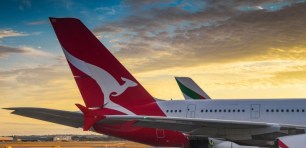
Source: Unsplash/Toomas Tartes.
The way we approach wellness has evolved over the past decade. Conversations around mental health and wellbeing are as commonplace in high-level leadership meetings as they are in team lunch breaks or after-work hangs.
As a founder whose company has been built off the back of my own struggles with mental health, it’s really heartening to hear these conversations happening around me.
These days, people want to do things that benefit both their physical and mental wellbeing. Industries have had to change as a result, evolving their brand and products so they can keep up with wellness trends. Take the travel industry, where wellness tourism has become one of the most popular forms of travel. Many businesses have seen major success in adapting their offering in line with wellness trends, be it through silent meditation retreats, spa treatments or facilitating creative pursuits like painting, writing or photography.
The wellness boom
The pandemic has changed the game, with the shift to working from home highlighting just how exhausting the city grind and 9-to-5 office culture can be. According to a report by the Australia and New Zealand Autonomy of Work Index, 77% of employees in the region experienced burnout at least once in 2020, with 50% of respondents also citing being overworked as a key contributing factor to their burnout.
One in three found that they couldn’t disconnect from work.
Meanwhile, the wellness industry grew to US$4.4 trillion ($6.35 trillion) in 2020. This underlines how important wellness has become for today’s society and plenty of industries, ranging from beauty and personal care to alternative therapies and tourism, have benefited as a result.
Leveraging wellness trends in the tourism industry
Travel companies have been quick to jump on the wellness bandwagon, encouraging travellers to switch off in a world where digital technologies have made doing so nearly impossible.
This comes as no surprise, given wellness tourism was growing at a rate of 8.1% — 50% faster than the overall tourism industry — prior to the pandemic.
As a result we’ve seen the birth of the micro-trip movement — short breaks for travellers wanting to combine adventure and wellness all while staying within a couple of hours of their home city.
Leveraging wellness trends such as micro-trips has been hugely successful for the domestic travel industry, particularly for locally based holiday rental platforms such as Aussie-born Riparide. In fact, data from the Australian government shows that rural and regional areas of Australia have become the most popular destinations for Aussie tourists, generating over $17 billion more for the tourism industry than travel to capital cities up to March 2022. Though there’s no doubt this increased tourism can present challenges, it’s still hugely beneficial for our regional communities.
Looking ahead at the wellness boom, we’re expecting travel with ‘framily’ — friends and family — to take off as people look to reconnect with one another. This is particularly true of Christmas and the holiday season, with research suggesting that shared experiences and sustainability are front of mind for consumers this year. Again, it comes back to travellers wanting to prioritise their physical and mental wellbeing and carve out time and space to be present.
Marlon Law is the co-founder and chief brand officer of Riparide.
Handpicked for you

Qantas admits it’s fallen short of customers’ expectations as executives asked to fill in as ground crew



COMMENTS
SmartCompany is committed to hosting lively discussions. Help us keep the conversation useful, interesting and welcoming. We aim to publish comments quickly in the interest of promoting robust conversation, but we’re a small team and we deploy filters to protect against legal risk. Occasionally your comment may be held up while it is being reviewed, but we’re working as fast as we can to keep the conversation rolling.
The SmartCompany comment section is members-only content. Please subscribe to leave a comment.
The SmartCompany comment section is members-only content. Please login to leave a comment.